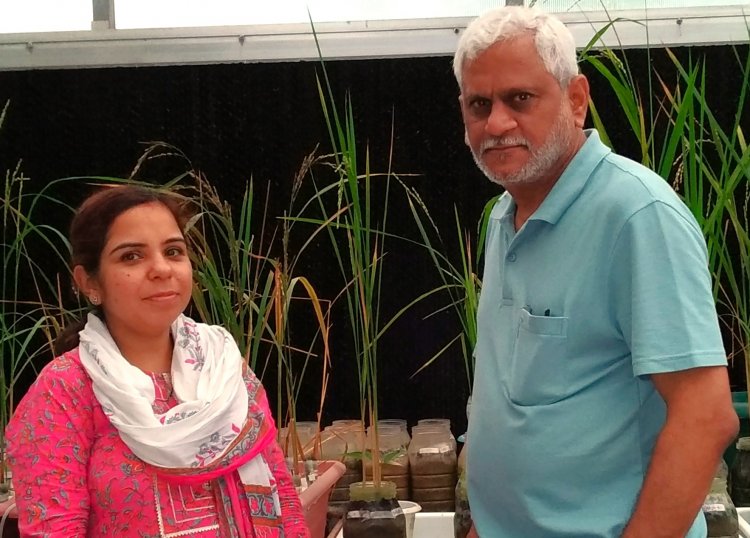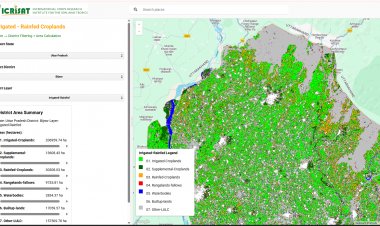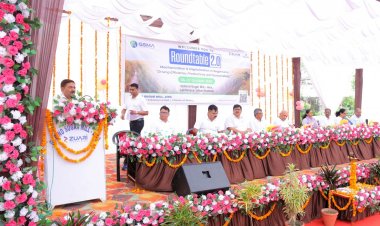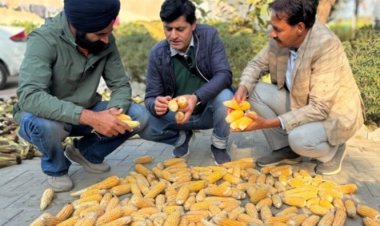Rice varieties and their genes for phosphorus and nitrogen use efficiency discovered at Indraprastha University
In a discovery that could help save both fertilizer costs and pollution due to leftover fertilizers in croplands, Indian biotechnologists identified rice traits and genes for both phosphorus (P) and nitrogen (N) use efficiency (PUE and NUE)

In a discovery that could help save both fertilizer costs and reduce pollution caused by leftover fertilizers in croplands, Indian biotechnologists have identified rice traits and genes for both phosphorus (P) and nitrogen (N) use efficiency (PUE and NUE). They compared three popular rice varieties from different parts of India for both NUE and PUE and found 12 common phenotypic traits and 5 common genes for both, facilitating crop improvement. They also found that CR Dhan 301 from Eastern coastal India has the highest NUE and PUE, followed by Panvel 1 and Samba Mahsuri (BPT 5204) from Western coastal and Southern India, respectively.
This research was carried out by Bhumika Madan and led by Prof. Nandula Raghuram, founder and head of the Centre for Sustainable Nitrogen and Nutrient Management (CSNNM), School of Biotechnology, Guru Gobind Singh Indraprastha University, New Delhi. Their findings have just been published as a research article in the international peer-reviewed journal Plants, and can be accessed at: https://www.mdpi.com/2223-7747/13/18/2567. Their novel finding that over half of the phenotypic traits are common for both PUE and NUE is good news for anyone interested in crop improvement for sustainable agriculture, they reported. N and P are the largest and most expensive components of NPK fertilizers, and cereals consume most of them in India. NUE or PUE in cereals is measured as the grain yield per kg of N/P fertilizer supplied.
India spends about Rs. 2 lakh crore on NPK fertilizers, most of which are government subsidies. "Only 25-30% of the applied fertilizers are converted into harvested outputs, while the rest is lost to air and water pollution, affecting our health, biodiversity, and climate change, thereby threatening our planet," says Prof. Raghuram. "While some of this wastage can be reduced by legume-based crop rotations and better manure management, we must also undertake genetic improvement of crops for nutrient use efficiency. India, being a center of origin of rice biodiversity, has tens of thousands of rice varieties, and our findings help in developing better cultivars through selection and breeding," he adds.
“We focused on rice, as it is the highest fertilizer-consuming crop in India, but the fact is that no crop is optimized yet for both NUE and PUE,” says Bhumika Madan. “Most scientists focus on either NUE or PUE, but ultimately, we need both efficiencies in the same crop variety, as we found in CR Dhan 301. The common traits and genes we identified for both NUE and PUE will also boost similar efforts in other crops,” she adds. The work was funded by the university and the United Kingdom Research and Innovation under its flagship Global Challenges Research Fund for the project on the South Asian Nitrogen Hub.
The wastage of precious nutrients from fertilizers, manures, and organic wastes due to the poor use efficiency of crops is a global problem causing nutrient pollution and threatening the sustainability of our planet. India is a signatory to the Kunming-Montreal Global Biodiversity Framework (2022), the target 7 of which mandates countries to halve their nutrient waste from all sources by 2030.


 Join the RuralVoice whatsapp group
Join the RuralVoice whatsapp group







































